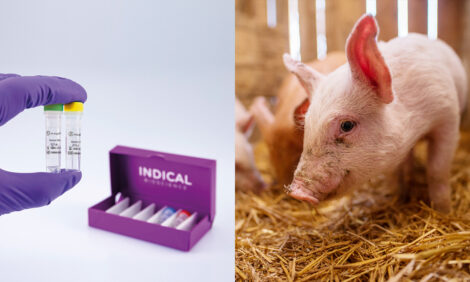



World Pork Expo: CoBank’s Brian Earnest shares US highlights from new pork report
Earnest shares trends and opportunities for the US pork industry to boost demandBrian Earnest, lead economist for animal protein at CoBank, recently spoke to The Pig Site’s Sarah Mikesell in Des Moines, Iowa, USA at the World Pork Expo.
Brian, can you share a few highlights from your new CoBank pork report?
We looked at all different facets of animal protein and what's going on in the category. The big ticket items are large trends that are occurring. We've seen this in the pork industry where historically they've depended a little bit stronger on export markets for disappearance and kind of struggled in some respects with the domestic demand.
Bacon is one of the top consumed pork items. I've been kind of thinking over the last year if there is potential for the re-imagination of the consumer for pork. What's driving this is that the consumer is looking at animal protein in a new way. There's this stronger demand and drive towards animal protein as a highly nutritious item.
It seems like consumers are coming to animal protein for new and exciting things such as new flavors and new ways for cooking pork. Overall, it just the perfect time for pork to really come to the consumer with something a little bit different.
Why has pork consumption in the US remained flat over five decades while chicken and beef have seen steady growth?
This is one of those interesting things that you think about when you look at the meat case in general at retail grocery stores. Sometimes pork struggles as a purchased item for various reasons. One of those, you look at the larger roast type items that we see in the meat case; another is the pork chop.
About 20 years ago, the marketing campaign was comparing it to chicken because of pork’s lean content and its highly nutritious qualities. Consumers were confused about the temperature and how long to cook pork roast and chop. It's just been challenging to cook that perfect pork chop. There's some opportunity to re-engage with the consumer in a unique way. It's encouraging to see a fresh marketing campaign that focuses on the good things that pork can do for the consumer.
Brian, how is the National Pork Board's “Taste What Pork Can Do” campaign expected to shift consumer perceptions and behavior, especially among younger demographics?
It's an exciting term and phrase is, “Taste what pork can do.” I'm seeing in the initial stages of what they're trying to accomplish trying to fit flavor profiles of pork in new ways. Primarily, we think about bacon or pizza toppings as some of the drivers.
We've seen that in the markets with pork 42’s and 72’s had strong market momentum through COVID as people were eating more pizza and those sorts of items. It’s time to think about what some of the other pork offerings are. [Editor's note: The 42’s and 72’s are pork trimmings distinguishing their lean-to-fat ratio. 42% trim: refers to pork trimmings that are approximately 42% lean, meaning they have a higher proportion of fat. 72% trim: refers to pork trimmings that are approximately 72% lean, meaning they have a lower proportion of fat.]
When trying to reach that younger demographic, they've gravitated towards beef for several reasons. One of those is the flavor profile that we associate with the fat and the marbling they see in beef. It is a premium item.
There are maybe some tradeoffs that we could see with pork where they look at why people are willing to pay the strong premium for beef. Is there an opportunity there from a genetic standpoint or different cuts and offerings there? I think it's fascinating to see the industry has this opportunity to reimagine what different cuts we're going to get out of pork.
What role do genetics and production practices play in shaping the flavor and consumer appeal of US pork?
It does seem there may be an opportunity when we think about fat content in the animal protein space. We know chicken is still going to be the lean animal protein. Pork is the fit in between – in the middle – whereas beef offers that kind of flavor profile with the marbling in it.
Maybe that's an area of focus from a genetic standpoint that we see emerging brand recognition to draw the premium. We know beef is undersupplied from a demand standpoint. Maybe there's an opportunity here for pork to slide in as the next tier of offering a value, but also a premium item as well.
Are producers prepared to change genetics to create more flavorful pork products and do something to boost pork demand?
Yes. It seems like over the last two decades, the market has really dictated towards this lean hog formulation. At least consumers are telling us now that they're looking for something a little bit different. Certainly, they are starting to recognize different brands like the Duroc or the premium genetic brands that offer something a little bit different. I don't think there's a better time than right now, really, for that to come out of the market and show that it can command a premium.
To read CoBank's newly release report, click here.
World Pork Expo: An estimated 10,000 people attended the 37th annual World Pork Expo - the world's largest pork industry-specific trade show - at the Iowa State Fairgrounds in Des Moines June 4-5, 2025. The NPPC event brought together pork producers and industry professionals from around the globe for two days of education, innovation, networking, and pork. The event saw nearly 400 pork industry companies from North America, Europe and Asia displaying their products and technologies throughout more than 300,000 square feet of exhibit space at the fairgrounds. World Pork Expo is the pork industry's occasion to showcase its latest products, innovations, and technologies, and exchange ideas.









